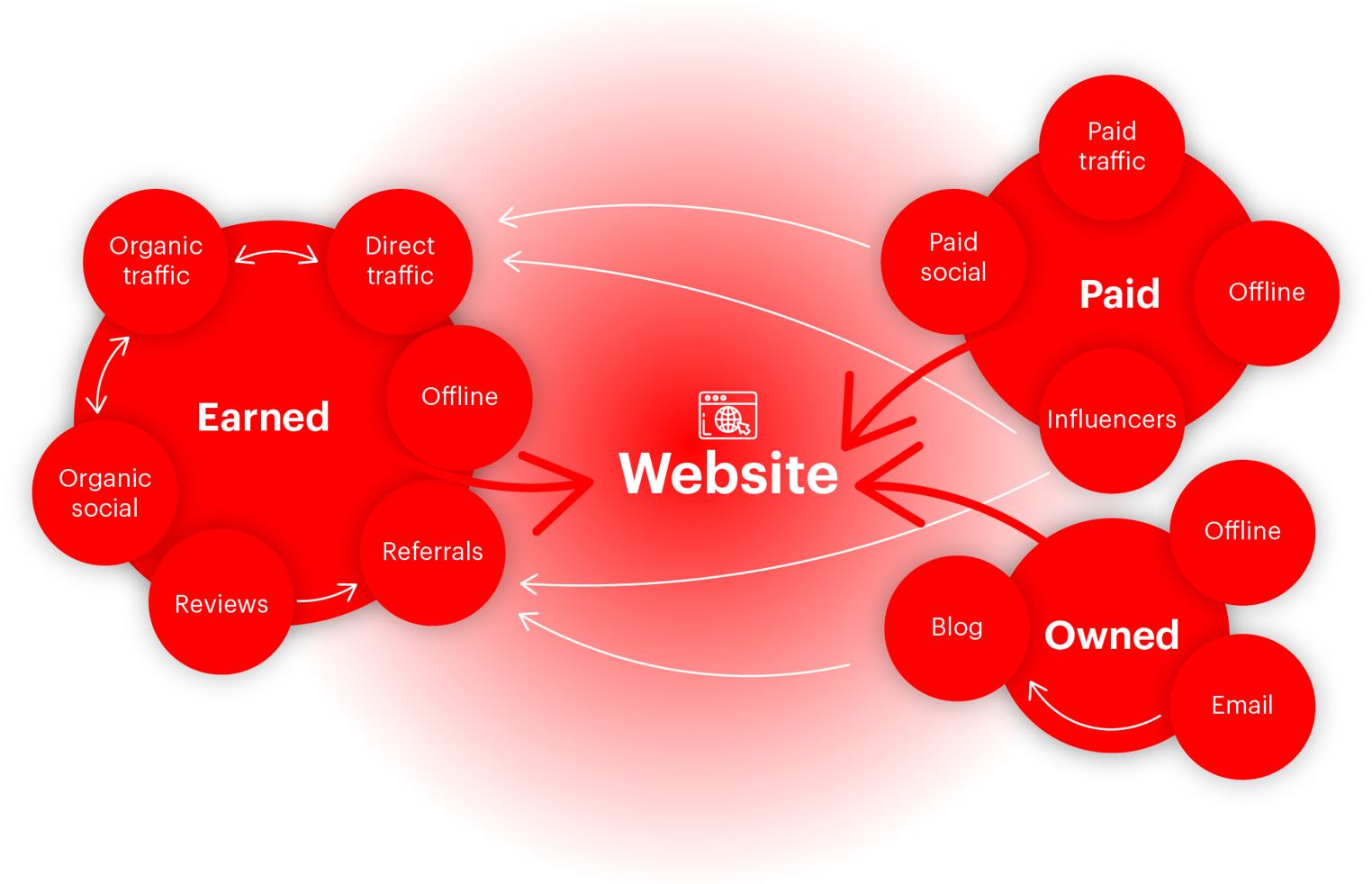
IESE Insight
Which marketing strategies drive the highest-quality traffic with the lowest cost and effort?
From mailshots to influencers, all the basics and not-so-basics to boost your website traffic.
All businesses have the same basic aims: to attract, convert and retain consumers. For online businesses (and increasingly for all sorts of businesses), the first port of call is the website, and quality traffic is the first step in this key sequence. Attracting traffic to the website is essential before anyone can be converted or retained.
Quality traffic is visits from people with a sincere interest in what you offer and who are most likely to engage with the site meaningfully — spending more time there, visiting more pages and perhaps converting. Quality traffic fuels business growth by improving search rankings, as search engine algorithms favor relevant, engaging sites. Conversely, poor traffic weakens online visibility.
Good website traffic falls into three main categories:
- Earned media: word-of-mouth, reviews and social media mentions.
- Paid media: search engine marketing (SEM), paid social media and digital advertising.
- Owned media: blogging, direct marketing and brand websites.
IESE’s Inigo Gallo, in a technical note compiled in partnership with Lorenzo Panlilio and Javier Segarra, identifies which marketing channels are most impactful in terms of difficulty, cost and results for lead generation and audience targeting.

Difficulty level: HARD
Organic traffic – $$$
Organic traffic comes from search engines without paid ads, providing a steady stream of long-term website traffic at no cost per click. However, strong search engine optimization (SEO) requires continuous effort, and it must adapt to changing algorithms and compete with others for rankings. While costly to implement and slow to show results, it avoids the recurring costs of SEM campaigns.
Referrals – $$$
Referral traffic — visitors via links on other sites — boosts credibility and search rankings, with top pages having four times more backlinks. Getting referrals happens organically, but it requires a lot of high-quality content like articles and videos, which take time to create. Getting links from high-authority sites is often a long and costly process.
Influencers – $$$
Influencer marketing is the new celebrity endorsement. Macro influencers reach global audiences and micro influencers engage with niche communities. Some brands prioritize authenticity, partnering with relatable micro influencers with high audience engagement. While organic collaborations exist, most require investment, and macro influencers can be costly. However, the right influencer can make marketing more targeted and personal, with a high short-term impact.
Difficulty level: MEDIUM
Direct traffic – $$
Direct traffic comes from visitors who are already familiar with your brand and have arrived through typed URLs, saved links or autocomplete. Strong brand recognition and loyalty drive this traffic, which can be boosted through brand awareness campaigns, emails and quality content. The benefits include low costs, but web analytics may misclassify traffic, and private customer portals can inflate numbers, leading to inaccurate insights.
Blog – $$
Blogs share expertise or encourage users to return to your site regularly. They can be a key content strategy: Businesses that blog see more traffic and high-quality backlinks, boosting search rankings. Guest blogging can also drive high-quality referral traffic. While blogging is cost-effective, it requires consistent effort and time to build an audience and see significant results.
Organic social – $$
Organic social media traffic comes from content shared on your social media profiles or user-generated posts linking to your site, often driving high-quality traffic. Like organic search, it’s free but requires consistent content creation and monitoring, and it takes time to register an impact. To boost social media traffic, brands must create engaging posts that stand out in crowded, algorithm-driven feeds.
Email – $$
Email marketing remains highly effective, with over 50% of consumers preferring it for product updates over apps, social media or direct messages. It offers strong ROI by targeting engaged users, leading to higher open rates and conversions. Success depends on maintaining a quality mailing list, personalization and strategic timing. While building a database takes time, email marketing is a cost-effective, long-term strategy with high returns, although creating compelling content can be challenging.
Offline – $-$$$ (wide range)
Offline marketing — such as print ads, TV, radio and events — can significantly boost brand awareness and drive quality website traffic. Similar to influencers, there can be a clear short-term impact, but costs vary significantly, with TV and print ads commanding high prices while flyers and direct emails are cost-effective strategies. A word of caution: Accurately attributing traffic to offline efforts can be difficult. Using QR codes can help track offline marketing effectiveness.
Difficulty level: LOW
Paid traffic (SEM) – $$$
Search engine marketing (SEM), or paying for a top slot, is the quickest way to rank on search engines, boost visibility and drive traffic, especially if you’re not ranking organically. It’s also great for reaching new audiences. SEM success depends on bid price, ad quality and landing page relevance, and the cost-per-click can be high. Effective SEM requires targeted ads with strong calls to action, and while small businesses can manage campaigns, larger efforts often need specialized agencies for optimization.
Paid social – $$
Organic social media traffic often falls short due to limited visibility on crowded social media networks, but paid social media campaigns boost reach by targeting followers and non-followers based on demographics, interests or job attributes. Social media ads on Facebook, Instagram and LinkedIn are typically cheaper than SEM, are easy to set up and can drive immediate traffic. However, while effective, they can become costly due to increased competition.
Consumer reviews – $$
Consumer review portals significantly influence purchase decisions, with 90% of consumers checking reviews before buying. Traffic from these sites is valuable, as users actively research brands. Regarded as a trustworthy source of information, positive reviews can boost sales, while low ratings can harm them. While generating reviews takes time, brands can speed up the process with email surveys or incentives, often at little to no cost when done organically.
High-quality content for high-quality traffic
Whichever channel or combination of channels your organization chooses to use, high-quality content is a must. Content here includes everything from copy in ads, to blog posts, to the choice of image on social media. Creating it requires structure and perseverance: Aim to be disciplined and creative, and to monitor the impact of the changes you make. There’s a whole world of website traffic to win.
READ ALSO:
Audience, placement, message: personalizing the marketing journey doesn’t have to be intrusive
Simple data reports boost sales and empower small business owners in making decisions

